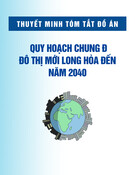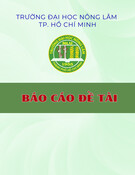
Original
article
Water
relations
of
European
silver
fir
(Abies
alba
Mill)
in
2
natural
stands
in
the
French
Alps
subject
to
contrasting
climatic
conditions
P
Guicherd
Université
Joseph-Fourier,
Centre
de
Biologie
Alpine,
BP
53, 38041
Grenoble
cedex
9,
France
(Received
30
November
1992;
accepted
26
January
1994)
Summary —
This
paper
reports
on
the
diurnal
and
seasonal
variations
in
water
potential,
stomatal
con-
ductance,
and
transpiration
of
twigs
from
silver
fir
in
a
mesohygrophilic
stand
of
the
external
French
Alps,
and
in
a
mesoxerophilic
stand
in
the
inner
French
Alps
where
this
fir
grows
near
its
ecological
limits.
In
both
stands,
predawn
needle
water
potential
was
always
0.2-0.4
MPa
below
the
potential
of
the
driest
soil
layer.
In
the
first
one,
it
was
maintained
at
about
-0.4
MPa.
Maximum
stomatal
conduc-
tance
and
maximum
transpiration,
which
could
reach
200
mmol/m
2
/s
and
1
mmol/m
2
/s,
respectively,
occurred
at
the
same
time
which
corresponded
to
minimum
leaf
water
potential.
In
the
dry
stand,
predawn
needle
water
potential
never
dropped
below
-1.14
MPa,
yet
a
general
browning
of
older
needles
was
already
observed.
The
decrease
of
predawn
needle
water
potential
was
accompanied
by
the
decrease
of
maximum
stomatal
conductance
and
transpiration
to
15%
of
their
highest
value,
which
reached
150
mmol/m
2
/s
and
1
mmol/m
2
/s,
respectively,
at
this
stand.
Maximum
stomatal
conduc-
tance
occurred
in
general
before
UT
07.00,
and
maximum
transpiration
5-6
h
later,
irrespective
of
predawn
needle
water
potential.
Furthermore,
in
both
stands,
stomata
closed
at
vapor
pressure
deficit
value
as
low
as
0.3
kPa.
This
extremely
early
reaction
to
water
stress
exhibited
by
European
silver
fir
is
consistent
with
its
well-known
sensitivity
to
atmospheric
humidity
and
soil
water
availability.
It
indi-
cates
a
strong
avoidance
strategy,
which
we
have
hitherto
attributed
only
to
species
better
adapted
to
drought.
Abies
alba
Mill
=
European
silver
fir
/ Alps
/ stomata
/ water
potential
/ water
deficit
Abbreviations
and
units:
E
=
transpiration
(mmol
(H
2
O)/m
2
/s);
E
max
=
maximal
transpiration
(mmol
(H
2
O)/m
2
/s);
Gs
=
stomatal
conductance
(mmol(H
2
O)/m
2
/S);
G
smax
=
maximal
stomatal
conductance
(mmol(H
2
O)/m
2
/s);
Lp
=
soil-to-leaf
hydraulic
conductance
(mmol/m
2
/s/-MPa);
PFD
=
photon
flux
density
(μE/m
2
/s);
VPD
=
vapor
pressure
deficit
(kPa);
ψ
I
=
leaf
water
potential
(MPa);
y
Imin
=
minimum
leaf
water
potential
(MPa);
ψ
p
=
predawn
needle
water
potential
(MPa);
ψ
s
=
soil
water
potential
(MPa);
Δψ
=
ψ
Imin
-
ψ
p
(MPa).

Résumé —
Comportement
hydrique
du
sapin
pectiné
(Abies
alba
Mill)
dans
2
stations
des
Alpes
françaises
climatiquement
contrastées.
L’article
décrit les
variations
diurnes
et saisonnières
du
potentiel
hydrique
foliaire,
de
la
conductance
stomatique
et
de
la
transpiration
de
rameaux
de
sapin
dans
une
station
mésohygrophile
des
Alpes
externes,
et
dans
une
station
mésoxérophile
des
Alpes
internes
en
limite
écologique
de
l’essence.
Dans
les
2
stations,
le
potentiel
hydrique
de
base
est
tou-
jours
inférieur
de
0,2
à
0,4
MPa
au
potentiel
hydrique
des
couches
de
sol
les
plus
sèches.
Dans
la
pre-
mière,
il
s’est
maintenu
aux
environs
de
-0,4
MPa.
La
conductance
stomatique
et
la
transpiration
maximales,
pouvant
atteindre
respectivement
200
mmol/m2/s
et
1
mmol/m
2
/s,
ont
toujours
eu
lieu
au
même
moment,
qui
correspondait
au
potentiel
hydrique
foliaire
minimum.
Dans
la
station
sèche,
le
potentiel
hydrique
de
base
n’est jamais
descendu
en
dessous
de
-1,14
MPa,
mais
on
pouvait
déjà
obser-
ver
un
brunissement
généralisé
des
plus
vieilles
aiguilles.
Cette
diminution
du
potentiel
de
base
s’est
accompagnée
d’une
diminution
de
la
conductance
et
de
la
transpiration
maximales
pour
atteindre
15%
de
leur plus
forte
valeur,
qui
pour
cette
station
sont
respectivement
de
150
mmol/m2/s
et
1
mmol/m
2
/s.
La
conductance
stomatique
maximale
a
le
plus
souvent
eu
lieu
avant
7
h
TU,
et
la
trans-
piration
maximale
5
ou
6
h
après,
indépendamment
du
potentiel
de
base.
De
plus,
dans
les
2
sta-
tions,
les
stomates
se
ferment
quand
le
déficit
de
pression
de
vapeur
atteint
seulement
0,3
kPa.
Cette
réaction
extrêmement
précoce
au
stress
hydrique
est
cohérente
avec
la
légendaire
sensibilité
du
sapin
à
l’humidité
atmosphérique
ainsi
qu’à
l’eau
dans
le
sol.
Elle
dénote
chez
cette
essence
une
nette
stratégie
d’évitement
que
l’on
croyait
jusqu’alors
être
l’apanage
d’espèces
mieux
adaptées
à
la
sécheresse.
Abies
alba
Mill
= sapin
pectiné
/ Alpes
/ stomates
/ potentiel
hydrique
/ déficit
hydrique
INTRODUCTION
European
silver
fir
is
one
of
the
most
impor-
tant
forest-trees
in
France,
covering
one-
million
hectares
(Jacamon,
1987).
Our
understanding
of
its
ecological
amplitude
is
essentially
based
on
the
study
of
its
nat-
ural
range;
this
conifer
cannot
tolerate
late
frosts
and
dry
summers
and
is
the
major
component
of
mountain
forests
(900
to
1
500
m
of
elevation)
where
atmospheric
humidity
is
high.
Dendrochronological
and
dendro-ecological
studies
emphasize
the
high
sensitivity
of
silver
fir
to
water
stress
(Bîndiu,
1971;
Serre-Bachet,
1986;
Levy
and
Becker,
1987;
Becker,
1989)
while
experiments
on
young
potted
trees
show
that
it
conserves
water
quite
well
(Becker,
1970,
1977)
and
in
particular
better
than
Norway
spruce
(Picea
excelsa
Link)
with
which
it
is
frequently
mixed
in
mountain
stands.
However,
silver
fir
appears
to
delay
the
regulation
of
its
water-vapor
exchanges,
which
classifies
it
among
species
that
are
poorly
adapted
to
drought
(Aussenac,
1980).
In
the
French
Alps,
fir
forests
grow
from
the
very
humid
external
belt
to
the
most
xeric
areas
of
the
internal
one.
All
along
this
transect
of
increasing
continentality,
changes
in
climatic
conditions
modify
floris-
tic
composition
and
decrease
productivity
(Oberlinkels
et
al,
1990).
How
does
this
species,
which
is
believed
to
display
a
low
plasticity
in
its
response
to
environmental
conditions,
survive
and
grow
at
the
limits
of
its
natural
range,
especially
when
it
is
found
in
the
vicinity
of
other
drought-resistant
species
such
as
pines?
As
little
is
known
about
the
physiological
ecology
of
this
fir,
we
attempted
to
understand
the
water
rela-
tions
of
this
species
in
the
field.
The
aim
of
this
work
was:
-
to
collect
information
about
diurnal
and
seasonal
variations
in
water
potential,
sto-
matal
conductance
and
transpiration
of
fir
twigs
in
2
contrasting
habitats;
-
to
understand
interrelations
between
these
variables
and
their
interactions
with
micro-
climatic
and
edaphic
factors;
and
-
to
search
for
a
possible
strategy
adopted
by
silver
fir
in
dry
stands.

MATERIALS
AND
METHODS
Study
sites
Two
north-facing
fir
forests
each
typical
of
a
par-
ticular
bioclimatic
zone
and
a
productivity
level
were
chosen
on
calcareous
bedrocks
in
the
Dauphiné
Alps
(near
Grenoble).
One
is
located
in
the
external
Alps,
as
defined
by
Ozenda
(1985)
by
a
Gams
angle
<
40°,
at
a
place
named
Valom-
bré
in
the
commune
of
Saint-Pierre-de-Chartreuse
(abbreviated
SPC).
It
is
located
in
the
National
Forest
of
Grande-Chartreuse,
at
an
elevation
of
1
000
m
(45°
20’ 25"
N;
5°
46’ 5"
E).
This
meso-
hygrophylic
stand
was
called
’fir
forest
with
tall
herbaceous
layer’
by
Richard
and
Pautou
(1982).
The
rainfall
here
exceeds
2
000
mm
per
year
and
dominant
trees
in
the
forest
reach
heights
of
45
m.
The
second
site
is
located
in
the
French
inter-
nal
Alps,
characterised
by
a
Gams
angle
> 50°,
in
a
centre
of
xericity
called
Briançonnais
(near
Bri-
ançon).
It
is
located
in
the
Council
Forest
of
Mont-
genèvre
(abbreviated
MTG)
at
a
place
named
Bois
des
Bans
at
a
mean
elevation
of
1
700
m
(44°
55’
10"
N;
6°
41’ 13"
E).
This
mesoxerophylic
site
was
described
by
Oberlinkels
et
al
(1990)
as
a
fir
forest
with
Melampyrum
sylvaticum
and
Carex
aus-
tralpina.
The
rainfall
here
is
about
700
mm
per
year
with
a
marked
summer
drought.
The
height
of
dominant
trees
does
not
exceed 25
m.
Adult
trees
were
chosen
at
each
site
with
respect
to
the
expo-
sure
of
the
crown
and
accessibility
of
twigs
at
a
height
of
about
5
m.
The
main
characteristics
of
studied
trees
are
presented
in
table
I.
Soil
water
potential
At
SPC,
the
soil
water
potential
was
measured
at
depths
of
20, 40, 60, 80
and
105
cm
with
a
Nardeux
DTE
1000
tensiometry
system.
At
MTG,
thermocouple
dewpoint
hygrometers
Wescor
PCT-55
connected
to
a
Wescor
HR-33
T
micro-
voltmeter
buried
in
the
soil
at
depths
of
10,
35
and
80
cm
were
also
used
(Pallardy
et al,
1991).
Measurements
were
made
early
in
the
morning.
Microclimatic
factors
A
meteorological
station
was
set
up
in
the
open
forest
at
MTG,
and
in
a
clearing
at
SPC.
Tem-
perature,
relative
humidity,
solar
radiation,
wind
speed
and
rainfall
data
were
stored
in
a
Campbell
21
X
micrologger
every
10
min,
throughout
the
1990
and
1991
growing
seasons
from
June
to
October.
The
photon
flux
density
values
used
(PFD,
μE/m
2
/s)
were
recorded
with
a LI-COR
190
SB
sensor
integral
with
the
porometer,
just
before
the
transpiration
was
measured.
The
vapor
pres-
sure
deficit
(VPD,
kPa)
was
calculated
with
inter-
polated
values
of
relative
humidity
and
tempera-
ture
stored
by
the
station.
Transpiration,
stomatal
conductance
and
leaf
water
potential
The
stomatal
conductance
of
twigs
was
measured
with
a LI-COR
1600
porometer.
The
resistance
(s/cm)
was
converted
into
conductance
(Gs,
mmol/m
2
/s)
according
to
Körner
and
Cochrane
(1985).
Transpiration
(E,
mmol/m
2
/s)
was
com-
puted
from
the
resistance
measured
by
poro-
meter,
relative
humidity
and
temperature,
which
were
stored
by
the
meteorological
station.
Leaf
temperature
was
considered
to
be
equal
to
air
temperature.
Resistance
of
the
boundary
layer
is
taken
as
0.2
s/cm,
a
value
which
is
set
in
the
porometer.
Measurements
made
when
the
relative

humidity
was
above
90%
have
been
eliminated.
Leaf
area
was
determined
by
weighing
a
paper
copy
of
enlarged
views
of
needles
obtained
with
a
overhead
projector,
considering
that
fir
needles
are
nearly
plane;
abaxial
and
adaxial
sides
were
taken
into
account.
The
transpiration
and
stomatal
conductance
values
presented
in
diurnal
and
sea-
sonal
time-courses
are
averages
of
5
measure-
ments
per
tree
achieved
on
south-facing
twigs
at
a
height
of
4
to
5
m,
except
for
3
trees
where
only
3
twigs
were
studied;
the
same
twigs
were
used
throughout
the
growing
season.
Simulta-
neously,
leaf
water
potential
of
previous
year
needles
from
adjacent
twigs
were
measured
with
a
pressure
chamber
(Scholander
et al,
1965);
5
to
7
measures
were
made,
each
taking
less
than
2
min.
All
these
measurements
were
repeated
10-13
times
a
day;
hours
are UT
hours.
When
sufficient
(E,
ψ
I)
paired
data
were
avail-
able,
soil-to-leaf
hydraulic
conductance
(Lp,
mmol/m
2
/s/-MPa)
was
indirectly
calculated
as
the
absolute
value
of
the
slope
of
the
linear
regression
between
transpiration
and
leaf
water
potential
(Reich
and
Hinckley,
1989).
All
corre-
lations
were
significant
at
p
<
0.05.
Statistical
tests
Correlations
have
been
tested
with
Pearson
r
(r
2
),
or
with
Spearman
r (rs)
when
the
former
was
not
appropriate
(Sokhal
and
Rholf,
1981)
In
the
following
*
means
p
<
0.05;
**
means
p
<
0.01;
NS
means
that
correlation
was
not
significant.
RESULTS
Rainfall
and
seasonal
trend
of
ψ
p
(predawn
needle
water
potential)
during
1990
At
SPC
considerable
rainfall
(300
mm
from
June
to
September)
and
good
soil
water
retention
maintained
the
soil
water
poten-
tial
(ψ
s)
at
a
high
level
(fig
1A).
The
ten-
siometry
system
failed
for
3
weeks
at
20
cm
depth
and
never
below
40
cm.
Conse-

quently,
ψ
p
remained
about
-0.4
MPa
throughout
the
growing
period.
At
MTG,
low
rainfall
(162
mm
from
June
to
September)
resulted
in
a
gradual
decrease
of
ψ
p
which
reached
-1
MPa
(fig
2A).
Data
collected
during
1991
show
that
ψ
p
was
0.2-0.4
MPa
below
the
potential
of
the
driest
soil
layer,
though
this,
as
at
the
other
site,
depended
on
the
trees.
ψ
p
fell
to
-1.14
MPa
in
1991
and
the
oldest
needles
of
all
trees
already
exhibited
browning.
Typical
and
noteworthy
diurnal
time-courses
in
each
stand
Over
40
diurnal
time-courses
have
been
obtained
from
the
2
stands.
Each
exhibits
one
typical
pattern,
with
some
noteworthy
variations
at
MTG.
At
SPC,
due
to
high
relative
humidity,
daily
VPD
never
exceeded
1.6
kPa,
and
PFD
1800
μE/m
2
/s.
A
typical
pattern
is
illustrated
on
August
2
1990
(fig
3).
Stomata
opened
widely
from
the
early
morning
and
reached
the
maximum
aperture
at
about
10.00-11.00
h,
and
then
closed
as
quickly
as
they
opened.
At
18.00
h,
they
were
nearly
entirely
closed
(the
slight
decrease
of
Gs
which
occurs
frequently
at
about
07.00
h
was
prob-
ably
due
to
irradiance
which
becomes
impor-
tant
only
from
10.00
h
owing
to
tree
position
in
the
clearing).
G
smax
,
Emax
and
ψ
Imin
occurred
at
the
same
time.
Stomatal
closure
immediately
induced
a
decrease
of
water
flow
through
the
leaf
and
stabilized
ψ
I,
which
then
enabled
its
quick
recovery.
Depending
on
climatic
conditions,
the
maximum
values
reached
by
each
variable
can
of
course
change.
A
cloudy
spell
may
also
induce
a
shift
in
the
model,
but
the
general
shape
of
the
curves
and
especially
coincidence
of
the
peaks
is
always
the
rule.
At
MTG,
microclimatic
conditions
are
very
different.
PFD
may
reach
2
200
μE/m
2
/s
















